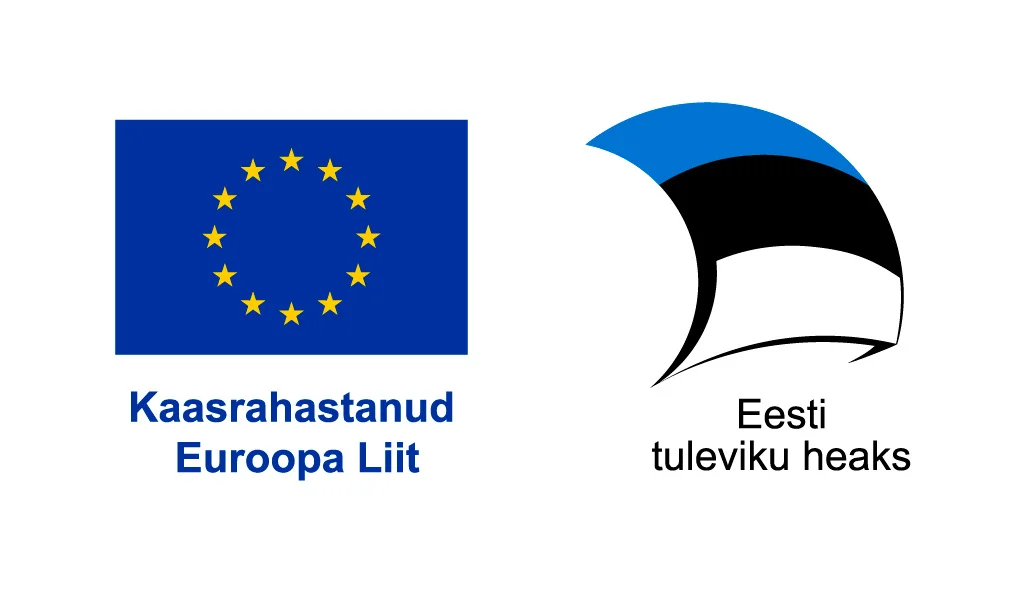The section of limestone wall from which Valaste, the highest waterfall in Estonia falls, resembles a layered dessert, where grey and brown layers are interspersed with green and blue.
The ’Layered dessert’ looks most spectacular in a glass – then the layers appear in all their glory. The waterfall and the ledges of Valaste offer an equally good view – thanks to stairs and a trail for tourists. The multi-layered creation can be evaluated from the top, bottom, and side.
And those who admire the wall of water falling from a 30-meter height do not think that this is not a creation of nature, but the result of digging. The fact is that the water for the waterfall comes from Kaasikvälja drainage ditch, or Valaste stream, which has now become part of nature.
Combined efforts of frost and wind
It is suspected that in winter, the Valaste waterfall falls into the top of the most photographed places in Estonia. It is most charming when the frost and the northern wind combine their efforts and carry water dust up, covering the trees growing on the limestone bank with frost, turning them into ice sculptures. As soon as it happens, the word about the metamorphosis of nature quickly spreads, and people from all over Estonia come to Valaste, rightly believing that the magic land of lace-makers will not last long.

It happened that the icy world of Valaste was revealed early on the morning of the Republic’s birthday, when the people gathered for the flag-raising ceremony. The tradition of raising the blue-black-and-white flag at sunrise on February 24 has been going on for 17 years, and there are no signs of it becoming obsolete yet.
The birthday of the Republic of Estonia and winter in general is a great time to explore the limestone coast: the tree crowns do not interfere with the view, and if you are lucky with the weather, you can also admire the beautiful ice sculptures in the vicinity of the neighboring waterfalls.
The birthday of the Republic of Estonia and winter in general is a great time to explore the limestone coast: the tree crowns do not interfere with the view, and if you are lucky with the weather, you can also admire the beautiful ice sculptures in the vicinity of neighboring waterfalls.
Of course, you will not see a dense forest then. In the warm season, it is like a jungle, framing the coast with a lush border, and it is good to get acquainted with, while walking along the tourist and educational path of Valaste. The newly built and marked trail runs along the highest and largest section of the Baltic Klint, where the steep bank rises 55 m above sea level.
There are 22 information stands on the way, which help to expand knowledge about what you saw. Read, for example, about the „drunken forest“. This is the popular name for leaning trees, which are many in the forest on the coast. This is due to the ground water flowing from the stone layers, the clay becomes slippery, and frequent landslides occur.

Clay forms the lowest layer of the coast, it is pressed into the coastal sand, and so beckons to put your hands on it: „Model me!“ On the beach, you can also work on your hand motoric skills by stroking stone boulders. Stones of various sizes, structures and colors are generously scattered along the coastal sand strip.
The wealth of nature
Valaste hiking trail stretches for 700 meters along the coast and another 700 along the forest growing on the limestone plateau. Add the 55 meters of descent and ascent on iron and wooden staircase. I.e. the altitude difference on the trail is almost the same as when lifting from the foot to the top of the highest Estonian mountain – Suur Munamägi, which is 60 meters.
Movement on the scree is facilitated by boardwalks. In the limestone-growing forest, there is a combination of lush vegetation that is not typical of the Northern forest and is only possible as a result of special conditions of existence. The sea and seeping water from the ledges maintain an evenly moist environment at the foot of the scree and constantly enrich it with minerals. The high coast hides the forest from direct sun and wind, and the sea maintains the temperature balance.
In such a humid, shaded forest, ferns feel like royalty, there are about ten species of them growing here. The grassy expanse is represented by clearings of aise-weed and nettle. Among the inhabitants of the animal world, bats feel comfortable among old trees, because there are enough insects there, the number of which must be kept under control.
It is much more difficult for a man to live in a forest that grows between the sea and the limestone coast. Before the 2nd World War, when the borders of farms reached the sea, it was not easy to survive, people living there needed ingenuity to survive. If you want to hear about the local way of life, you can book a guided walking tour in the village of Valaste. As guides, a married couple, lawyers by education, Indrek and Ailie Arming, will entertain you talking about things that are usually left out of the brackets.
Your guides will tell you how fishermen smoked Baltic herring using alders and nettle stored in the forest growing near the sea, how they lifted fish in baskets to the edge of the cliff. Then the fishing catch was taken on horseback to Tartu and Narva for sale.
„The villages, of course, had places for ascent and descent, but they were very steep and it was impossible to drag heavy boxes of fish along them. These places are still preserved, the locals know about them, but it is better for tourists to move by stairs,“ advises Indrek Arming.
In the hike, which won the public award in the last contest for the best Ida-Viru adventure, garbage bags are distributed in addition to knowledge. So, the garbage thrown out by careless tourists in the forest gets to the right place. Unfortunately, usually groups return from the forest, carrying full bags.
The beginning of Vallaste trail could be the end, and vice versa. The hike, organized by the holiday village begins in Ontika and comes to Valaste cafe, where you can enjoy hiker’s soup. By the way, most of the year the cafe is open around the clock. So, you can eat at dawn and at sunset. Want to see both? You can spend the night right here – there is a holiday home with all amenities and cabins for camping, you can use a grill and a barrel for diving, rent a bike or park your caravan.
The new life of Ontika manor
You can start your hike in Valaste and walk to Ontika. There, on the finish line, you can see Ontika manor. Its owner is the world champion and most successful Finnish skier Kalle Palander, according to whom, Ontika equally charmed him with the beauty of the estate and the limestone coast.
Soon it will be 10 years since the estate had a new owner, and during this time it was possible to partially revive the manor, which was in a deplorable state. In the hundred-year-old servants’ house, the Palanders had set up a cozy hotel, tidied up the former hay barn, and now there are stables on the first floor and living quarters on the second.
The family tries their best to have a mansion with an area of almost 800 square meters regained its former splendor, but they are still far from the ultimate aim. To begin with, the ceilings and the beautiful stone wall were stripped of plaster, so that the interior would match the exhibitions held in the gallery open here. In the courtyard, you can’t take your eyes off the horses and roses, both of which are the great love of mistress Riina-Maija. Roses have one undeniable advantage: horses don’t eat them! Unlike, for instance, pelargoniums ????
SIRLE SOMMER-KALDA
„The story is written with the support of the EU Regional Development Fund“









